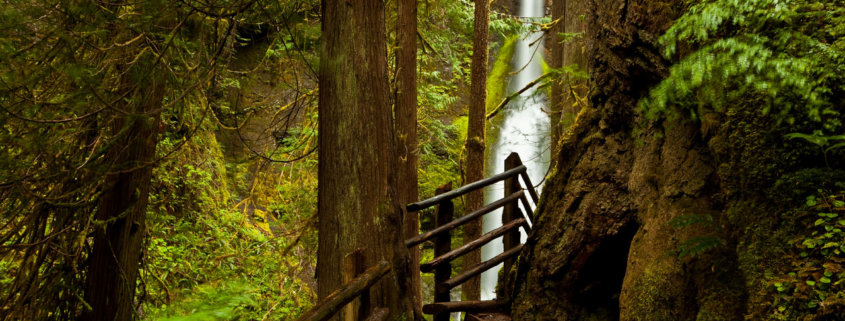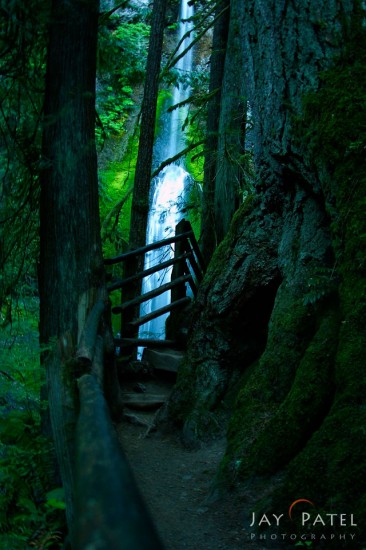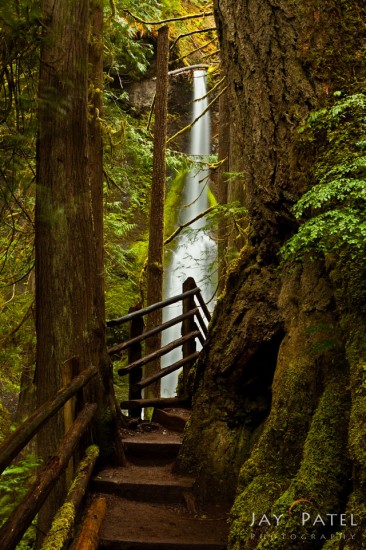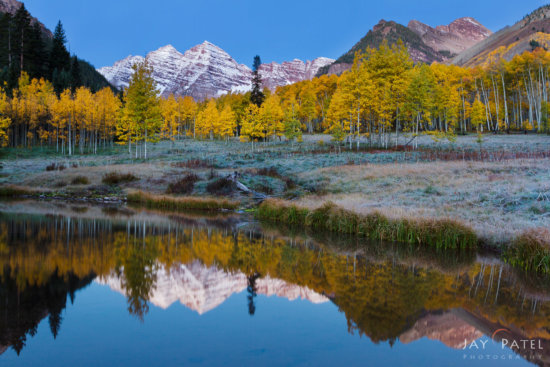Two Important Skills for Mastering Landscape Photography
 As pro landscape photographers, one of the most frequent questions we receive is…What does it take to master landscape photography?
As pro landscape photographers, one of the most frequent questions we receive is…What does it take to master landscape photography?
Unfortunately, there is no simple, quick answer to this question. Photography – especially landscape photography – is complicated. To take a successful landscape photo you have to find a way to create visual impact with your technical skill. These include working with light, camera exposure, focus settings, photography composition and more. You will have to deal with added complexity of trying to deal with unpredictable weather and light. Technical skills alone will not help you get over this unpredictable factors. For this you will need to develop creative workflow.
To master landscape photography you will have to be an expert at using your photography equipment and also coming up with creative solution to overcome the unpredictability that mother nature throws at you. Let take a look a closer look at what role each of these skills play to master landscape photography.
Role of Technical Skills in Landscape Photography
When I mention technical skills, I’m referring to such things as focus, shutter speed… aperture… ISO… how to set up your camera… how to post-process your landscape photos. Having a mastery of technical skills means having a deep understanding of how your digital or mirrorless camera works, how to use Photoshop or Lightroom, and how these two are intricately tied together.
So what happens if you don’t have the technical side of photography nailed down? Let’s compare the two photos below of Marymere Falls in Washington.
The above photo was taken in 2001. My technical skills as a beginner landscape photographer at that time were not fine-tuned. As you can see, the landscape photo from Marymere Falls in Olympic National Park has many under exposed areas. The water in the waterfall appears blown out – too bright with no visible details. I didn’t know how to properly set my camera exposure to capture this image. Also, the foreground is blurry. I didn’t know how to use focus settings on my camera to get everything sharply in focus. Although I could see the scene with my own eyes and knew what image I wanted to capture, I didn’t have the technical skills to photograph it accurately.
In addition, this landscape photo was processed incorrectly. I shot this in a JPEG format rather then using a RAW format. At the time, there wasn’t a great deal of knowledge about RAW format versus JPEGs so I didn’t understand the benefits of using RAW format for landscape photography. I assumed JPEG was good enough. My lack of technical knowledge as a beginner landscape photographer created an unappealing photograph that did not do justice to the beautiful scene.
Now look at the photo I shot of Marymere Falls in 2010. The composition is almost identical. But notice the rich colors and the image’s details. This landscape photo was exposed properly… the dark areas have appropriate color detail and tonal range… the waterfall now has smooth flowing water lines rather than the previous blown out look. The photograph was also processed nicely. I understood and was able to successfully use exposure bracketing and combined multiple photos using Photoshop layers and masks. Between 2001 and 2010, I drastically improved my technical skills. I acquired the ability to capture a complicated scene with everything properly exposed and processed. The more recent photo allows people to look at the image and almost feel they’re looking out a window at the real view.
With a mastery of the technical skills, landscape photographers often assume they can now go out and capture any photo they want. Remember… technical skills are only half of the landscape photography story.
Landscape Photography and Creative Workflow
Ok… so if as you feel you’ve mastered your technical skills for landscape photography, this doesn’t mean that you can just rush out and capture a landscape photos that makes people say “Wow!” Capturing the vision you have in your mind takes more than mastery over your technical skills.
Landscape photography is tricky. The light and environmental conditions you encounter aren’t predictable. Even with the best technical skills, landscape photographer will often face challenging situations that they have not seen before.
For example, Varina and I went to Colorado to shoot Maroon Lake in autumn of 2012. The recent drought had devastated the area and the lake was more like a mud puddle. The beaver lodge was exposed and the beavers had moved out. Instead of a gorgeous pristine lake, we had an ugly mud pit. No amount of technical skills would allow me to come away with an inspirational landscape photo from this location due to the drought conditions. In a situation like this, your creativity and workflow must come into play. We were forced to shoot photos that were far different than what we had expected. In the end our creative thinking combined with our technical skills allowed us to get some spectacular autumn photos as seen below:
Landscape Photography at Olympic National Park
So at this point you are wondering what is the difference between technical skills and creative workflow? There is a lot of overlap between the two, but they are two distinct and essential skills required for mastering landscape photography. Take a look at the following two photos of sea anemones from Olympic National Park in Washington state.
The one shot in 2003 is technically a very good photo that is typical of a beginner landscape photographer. It’s properly exposed and well-processed. The colors are natural and the image has excellent tonal range. Everything is very sharp. I was able to capture the sea anemones’ colors underwater by using a circular polarizer. I had the technical skills to see a scene and then capture it the way I had envisioned it. The photo accurately reflected the reality of the scene.
But, despite the ‘on-point’ technical aspects of the photo, it simply doesn’t make someone say “Wow!” To do THAT, I had to think more outside the box. For the next photo, I focused more on the sea anemones themselves rather than their environment.
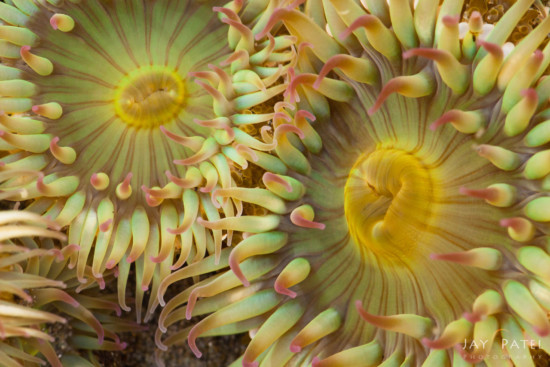
Landscape photo captured using both technical skills and creative workflow from Olympic National Park, 2010
The tide was low enough to allow me to get close; I used a bottle of sea water poured to one side to wash the sand away. In regards to timing, I had to choose between late in the day or early in the morning to ensure the right light for capturing the brilliant colors. I chose to go in the evening (during low tide). The direct evening sun light lit up the anemones. By placing the sun behind me, I was able to bounce the reflected light away from the camera eliminating a need to use the circular polarizer. Because a circular polarizer slows down shutter speed and I needed a fast shutter speed to ‘freeze’ the movement of the tentacles, I had to rely on this perfect light (rather than the polarizer) to capture the anemones’ brilliant colors.
As you can see from the examples above, getting it right in camera is about more than just knowing how your camera works. It’s about putting yourself in the right place at the right time and then using local knowledge, the right photography equipment, key composition strategies, essential camera skills, and a good dose of creativity to overcome the ever-changing conditions of nature.
So to master landscape photography you will have to go beyond technical skills to capture stunning photos. You will have to learn to think creatively to overcome the unpredictable nature of landscape photography. Good luck!

